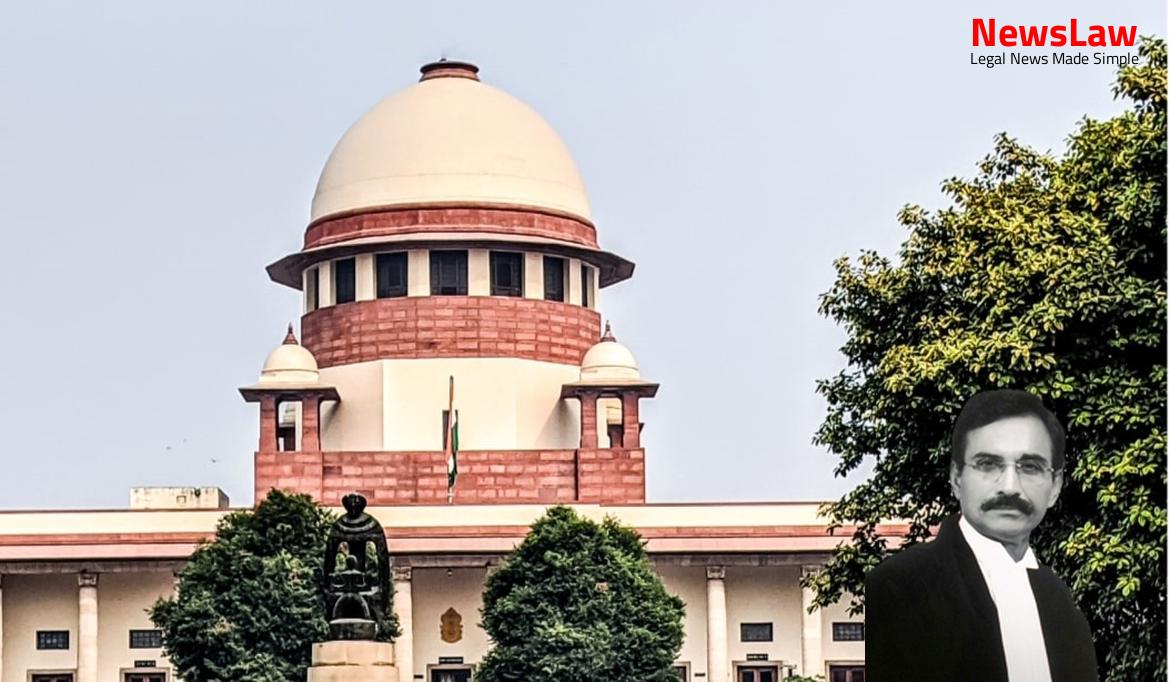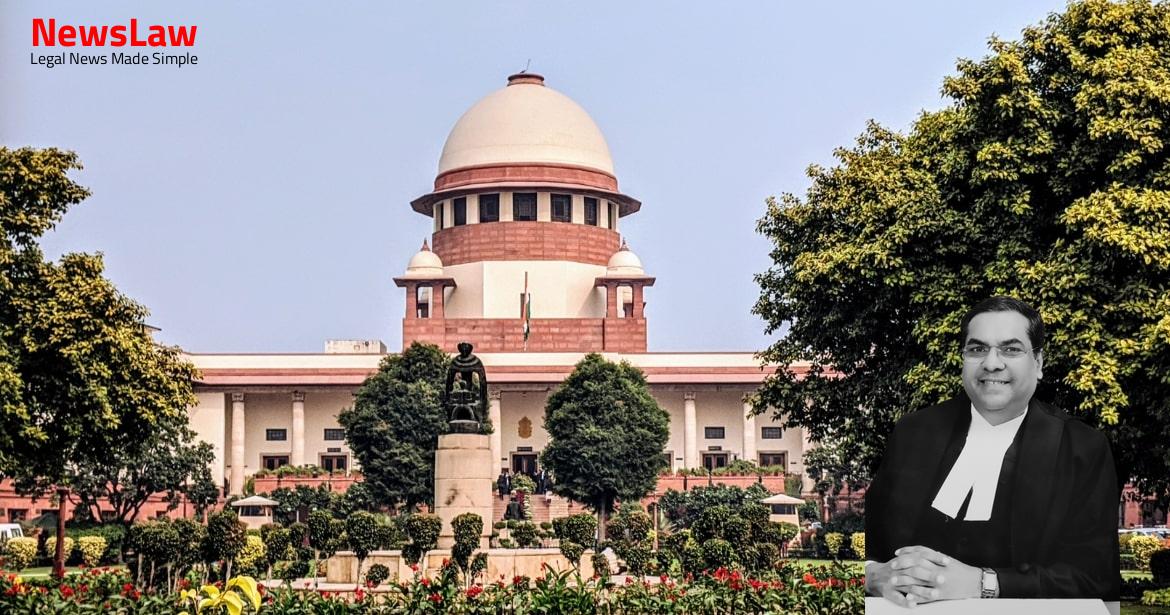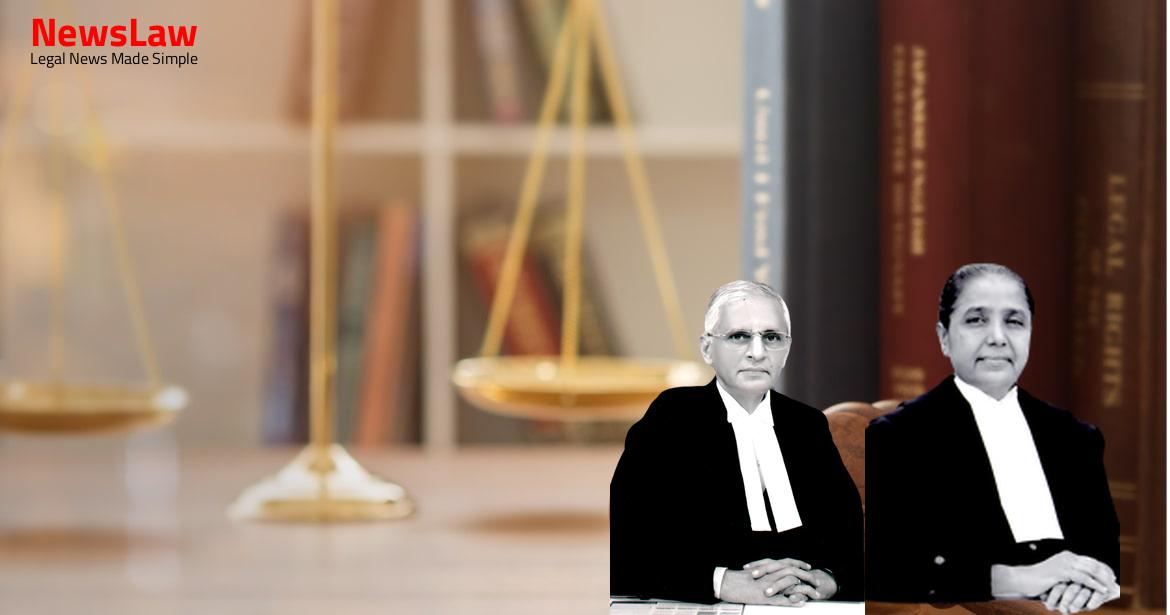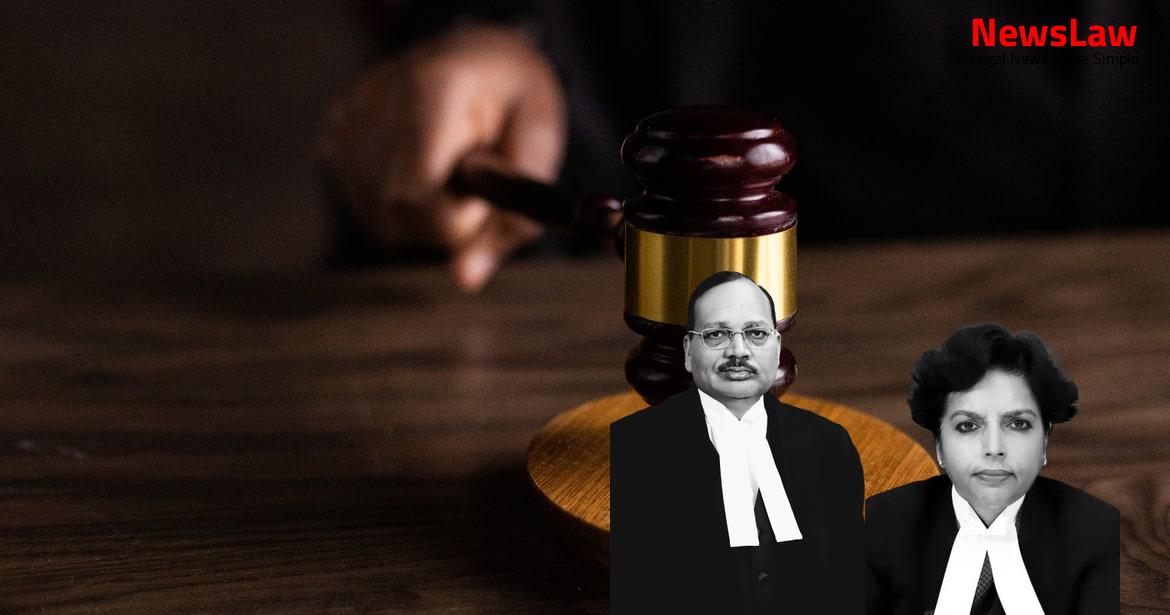The legal case involved a thorough examination of evidence and witness testimonies, with the court focusing on the application of legal principles to reach a decision. The judgment underscores the importance of complete evidence and the need to exclude any reasonable doubt. Discover the intricacies of the court’s legal analysis in this summary.
Facts
- The post-mortem report revealed injuries including a ligature mark on the neck, ligature marks on both wrist joints, and circular ligature marks on ankle joints of the deceased.
- Evidence pointed to the guilt of the Appellant in the murder and concealment of the body of Becharam Dhara.
- The trial court convicted the Appellant under Section 302 read with Section 34 and Section 201 read with Section 34 of the IPC.
- Witness testimonies, including that of family members and witnesses, supported the prosecution’s case.
- Identification of the deceased’s body was made through photographs and apparels by family members.
- The recovery of a wristwatch belonging to the deceased and given by his brother was a key evidence in implicating the Appellant in the crime.
- The Appellant’s signature on the counterfoil from the watch repair shop was not denied, although he claimed it was taken forcibly by the police.
- The appellant was sentenced to undergo rigorous imprisonment for life for the offence under Section 302 read with Section 34 and rigorous imprisonment for nine months for the offence under Section 201 read with Section 34 of the IPC.
- The other accused were acquitted as the trial court was of the opinion that the prosecution could not establish their guilt.
- The appeal was dismissed by the High Court and the judgment of the trial court was affirmed.
Also Read: Challenging Foreign Contribution Regulations: Legal Analysis
Issue
- The court thoroughly examined the evidence presented by both parties
- An important legal issue was raised regarding the admissibility of certain documents
- The judge considered relevant case law and legal principles in reaching a decision
- Expert witnesses provided testimony to support their respective positions
- The final judgement hinged on the interpretation of a key statute
Also Read: Precedence of Secured Debt over Crown Debt: Legal Interpretation
Analysis
- Identification of the body and apparels based on photographs and recovered items
- Inconsistencies in statements of witnesses and investigating officer
- Improvements and contradictions in witness testimonies
- Controversies regarding the seizure of evidence and confessional statement
- Issues with the identification of the deceased and the credibility of evidence
- Reliance on circumstantial evidence and lack of direct proof
- Exclude every possible hypothesis except the one to be proved
- There must be a chain of evidence so complete as not to leave any reasonable ground for the conclusion consistent with the innocence of the accused
- The evidence must show that in all human probability the act must have been done by the accused
- The prosecution’s reliance on incomplete circumstances to prove the appellant’s guilt is insufficient.
- The circumstances presented do not conclusively point to the appellant as the probable murderer.
- There is a lack of evidence establishing the appellant’s direct involvement beyond a reasonable doubt.
Also Read: Analysis of Bank Charges in Loan Dispute
Decision
- The Appeal is allowed
- The judgment of the High Court is set aside
- The Appellant is acquitted of the charges under Section 302 read with Section 34 and Section 201 read with Section 34 of the IPC
Case Title: MD.YOUNUS ALI TARAFDAR Vs. THE STATE OF WEST BENGAL (2020 INSC 217)
Case Number: Crl.A. No.-000119-000119 / 2010



